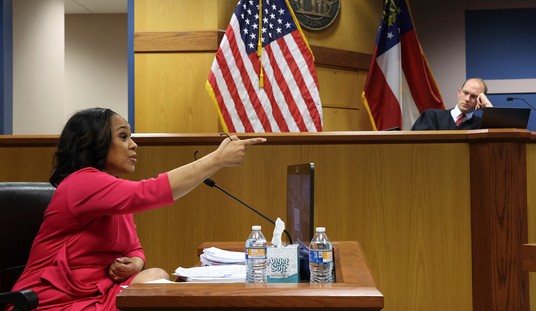Mark Steyn* writes, “the short history of the post-war western democracies is that you don’t need a president-for-life if you’ve got a bureaucracy-for-life:”
The people can elect “conservatives,” as from time to time the Germans and British have done, and the left is mostly relaxed about it because, in all but exceptional cases (Thatcher), they fulfill the same function in the system as the first-year boys at wintry English boarding schools who for tuppence-ha’penny would agree to go and take the chill off the toilet seat in the unheated lavatories until the prefects were ready to stroll in and assume their rightful place. Republicans have gotten good at keeping the seat warm.
Thus, America in the 21st century – a supposedly “center-right” nation governed by a left-of-center political class, a lefter-of-center judiciary, and a leftest-of-center bureaucracy.
Liberalism, as the political scientist Theodore Lowi wrote, “is hostile to law”, and has a preference for “policy without law”. The law itself doesn’t really matter so much as the process it sets in motion – or, as Nancy Pelosi famously put it, “we have to pass the bill so you can find out what’s in it.” When Lowi was writing in the Seventies, he noted that both the Occupational Safety and Health Administration and the Consumer Product Safety Commission were set up by a Congress that didn’t identify a single policy goal for these agencies and “provided no standards whatsoever” for their conduct. So they made it up as they went along.
Where do you go to vote out the CPSC? Or OSHA? Or the EPA?
And what happens when the left banishes to the right side of the aisle heretofore near-universally respected groups such as the Boy Scouts or the Chamber of Commerce? Or even a journalist like Juan Williams — or heck the cable news channel he’s been “exiled” to?
To Obama and other Alinskyites, that’s a feature, not a bug, Stanley Kurtz, author of Radical in Chief tells Hugh Hewitt:
HH: Punish our enemies, reward our friends. And then the President says this about Republicans.
BHO: We’ve got to have middle class families up in front. We don’t mind the Republicans joining us. They can go, come for the ride, but they’ve got to sit in back.
HH: Now that, Stanley, it makes so much more sense to me after I read your book. And especially as I get to the end, that the President’s long term strategy may be in fact to force a class-based realignment of American politics. And Alinsky would teach you, and the President would personify that by personalizing, objectifying and angering people about other people in America.
SK: Well, that’s right, Hugh. You’re absolutely right. And I go over this in many ways and at many points in the book. And I can’t tell you, Hugh, how many times during my research I ran across this notion of the enemy. The Alinskyite organizers, who were Obama’s mentors and colleagues, just constantly used this word enemy. And now I do mention this a few times in the book, but I made a conscious decision not to make too much of it, because maybe people wouldn’t believe or be persuaded by my constantly mentioning how they harped on this word. But it was almost a slip, I think, because he had to be used to hearing that all the time from his friends and colleagues. But the larger point is that this Alinskyite tactic of polarization has been put within the context of a long term socialists strategy for realigning the Democratic and Republican parties along class lines. This was the holy grail of the modern American socialist movement as Obama grew up in it. And the way it works is roughly like this. You launch a series of attacks on particularly business interests, and you treat them as enemies, whether you use that word or not. You try to drive them out of the Democratic Party and into the Republican Party. Now that might seem crazy. Why would anyone want to drive someone out of their party? But the other side of the coin is that once you start these anti-business attacks, you jump start a populist movement, an anti-business populist movement of the left. And those people start pouring into the Democratic party. Then, allied with that, you do a similar sort, you run a similar sort of polarization strategy with Latinos and blacks. And you assemble a rainbow coalition of radicalized minorities along with economic populists, with heavy participation from unions, especially public sector unions. And in this way, you try to activate the left into a kind of movement, into a kind of replay of the 60s, but this time grouped around economic populist issues. And with the business interests in the Republican party, and the what you might want to call the have-nots gathered in the Democratic party and activated, America is polarized along class lines. And the theory of Obama’s mentors and colleagues was that over time, the have-nots, once they were divided by class from the haves, would inevitably drift towards socialism.
HH: Now what’s interesting, Stanley, you also have to combine that with, as you point out in Radical-In-Chief, a vast amount of strategic patience, of the sort that the President, as you demonstrate, practiced as a state senator in Illinois, and which may in fact be the modus operandi behind Obamacare, the financial regulatory reform bill, and many other aspects which are simply bewildering in their political impact as we’re seeing them unfold right now.
SK: That’s right, Hugh. And I do think that Obama initially was prepared to move even more slowly than he has. But when he got a large Democratic majority in Congress, he decided to push for a little more than he otherwise would have. But the longer term view on that is you put these bills in place. Let, almost dare the other side to try to repeal them. And then you get people angry, who are going to benefit from those new entitlements, and that’s what jump starts the movement.
Will that be an effective strategy? We may very well find out, starting next week.
Update: The smug remains the same.
* Yes, I’m linking to He Who Must Be Linked. Fortunately America — even California — isn’t quite Canada. But as Mark writes at the end of its essay, it’s certainly well on the way, particularly if you’re a [endless conveyor belt of revenue to leviathan Sacramento] small business owner.










Join the conversation as a VIP Member